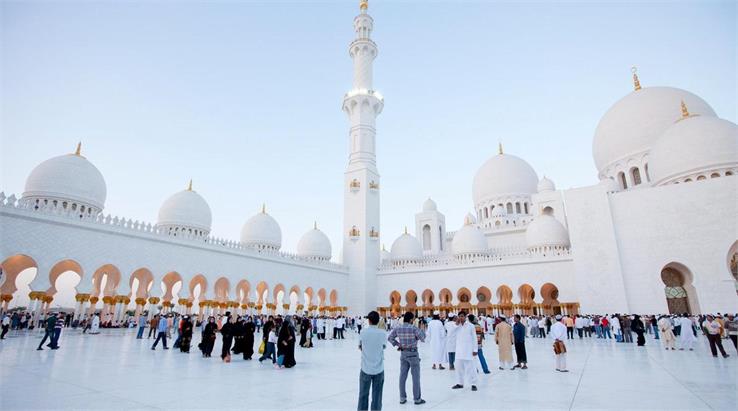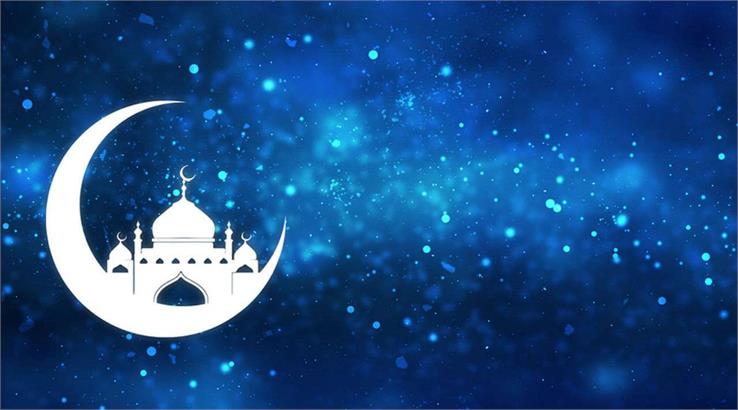Eid - The Festival of Teachings
Eid is one of the most religious festivals of Muslims. It is a three-day-long festival and celebrated by Muslims all over the world. The actual meaning of Eid, in Arabic, is a ‘festival’ or ‘feast.’ It is celebrated twice a year as Eid al-Fitr and Eid al-Adha.
Fashion statements might be of great significance these days, but on Eid, every Muslim wears simple, modest clothes, as directed by the Quran. Men wear plain kurta Pajama (long shirt and trousers), and women wear Hijaab with plain salwar kameez or sharara.
Both the Eids are celebrated with great enthusiasm in India, especially in Muslim majority states like Hyderabad, Delhi, Uttar Pradesh, and Calcutta.
Eid al-Fitr
Eid al-Fitr means ‘the feast of breaking the fast.’ It is celebrated on the first day of the 10th month (Shawwal) of the Islamic calendar. Eid al-Fitr marks the ending of Ramadan, the month of fasting. This Eid is the first and only day in the month of Shawwal, on which Muslims are not permitted to fast. Eid al-Fitr is also known as Sweet Festival/Sugar Feast, as Muslims around the world prepare sweet dishes and serve the same to everyone.
Eid al-Fitr begins at the first sighting of the crescent moon shortly after sunset. If the moon is not observed immediately after the 29th day of the previous lunar month, then it is the following day.
People greet each other with hugs and “Eid Mubarak” (Happy Eid). Many devotees attend communal prayers and listen to sermons. People give away Zakat al-Fitr (charity, in the mode of food or money) to those in need.
History
The month of Ramadan is considered very holy in Islam. People observe fast from dawn to dusk for the whole month. It is believed that the doors of heaven remain open in the month of Ramadan, and the doors of hell remain shut, with all the devils tied behind it. Good deeds, along with charity and prayers, are believed to bring good fortune to people.
As per Islamic tradition, in 610 A.D., during the month of Ramadan, Prophet Muhammad had a vision of angel Jibril (also known as Gabriel) while meditating in Mount Hira. Jibril introduced himself as a messenger of God. Jibril embraced Muhammad and taught him verses in the appreciation of God and His teachings.
Muhammad was startled with this. Initially, he didn’t trust Jibril and thought of him as an evil spirit. His wife came to his rescue and made him realize that Jibril was indeed an angel and the true messenger of God. Muhammad realized his mistake and acknowledged the visit to Jibril. He memorized all the verses and started spreading them among people. After this, Jibril paid many visits to Muhammad to impart knowledge in the form of verses.
Since this happened to Muhammad in the month of Ramadan, Islam encourages people to be at their best during Ramadan while fasting, praying, giving love to others, & end the month with celebration. That’s why the end of Ramadan is celebrated with Eid al-Fitr.
Eid al-Adha
Eid al-Adha means ‘the feast of sacrifice.’ It is celebrated at the end of Hajj, the 10th day of the final month of the Islamic calendar. This day marks the tale of how God commanded Ibrahim to sacrifice his son Ismail as the test of faith.
This day, Muslims sacrifice an animal as an offering to God, recalling how they should be willing to give up even their most precious possession. Muslims go to the holy city of Mecca in Saudi Arabia during Hajj. This trip is mandatory for every Muslim, at least once in their lifetime, but only for those with means. At the end of Hajj, Muslims celebrate Eid al-Adha to mark the end of the holy pilgrimage and shed affection to any possession.
Eid al-Adha is also known as Bakri Eid, which demands the sacrifice of an animal. In Arabic, Bakr means Cow. Thus, Arabic countries celebrate Eid al-Adha with the sacrifice of a cow. However, in Urdu, Bakr means goat and Muslims celebrate Eid al-Adha with the sacrifice of a goat.
History
According to Islamic tradition, present-day Saudi Arabia’s valley of Mecca used to be a dry, rocky and uninhabited place. Upon God’s instructions, Ibrahim left his homeland Canaan and reached Mecca along with his wife Hagar and son Ismail.
After a few days, Ibrahim prepared to return to Canaan, leaving his family behind when his wife questioned him if this was God’s instruction. She said, “if God has instructed you to do so, you may go. He won’t waste us here.” Ibrahim couldn’t say anything and left, considering it God’s wish. Although he left plenty of water and food for his family, they ran out of it in no time.
Hagar, as believed in Islam, ran up and down nine times between the two hills Safa and Marwa in the desperation of finding water. Upon exhausting, she collapsed beside her son Ismail and prayed to God for a solution. Miraculously, a spring of water showered from the ground and filled the environment with water. The well came to be known as Zamzam Well. The water not only fulfilled the need of Hagar and her son Ismail but was plenty for passing nomads.
Years later, God instructed Ibrahim to get back to Mecca and build a place of worship adjacent to Zamzam Well. Ibrahim, along with his son Ismail, built a stone and mortar structure called Kabba, where devotees would gather to strengthen their faith in God. Due to Zamzam Well, Mecca developed into a thriving desert city and a major city of trade.
In the month of Hajj, God commanded Ibrahim to sacrifice his dearest possession, his son Ismail, to prove his loyalty to Him. After wondering a lot, Ibrahim decided to submit to God’s will when the devil tried to tempt him and his family to disobey God’s command. To shrug the devil away, Ibrahim threw stones at him (that’s why pilgrims throw stones at symbolic pillars in the Stoning of the Devil during Hajj).
Ibrahim closed his eyes and cut his son Ismail’s throat. Upon opening eyes, he saw his son unharmed and found out that God replaced his son with a ram, and Ibrahim had sacrificed a ram to God’s wish. This is how Ibrahim proved his loyalty, and the culture of sacrificing, Eid al-Adah, started.









